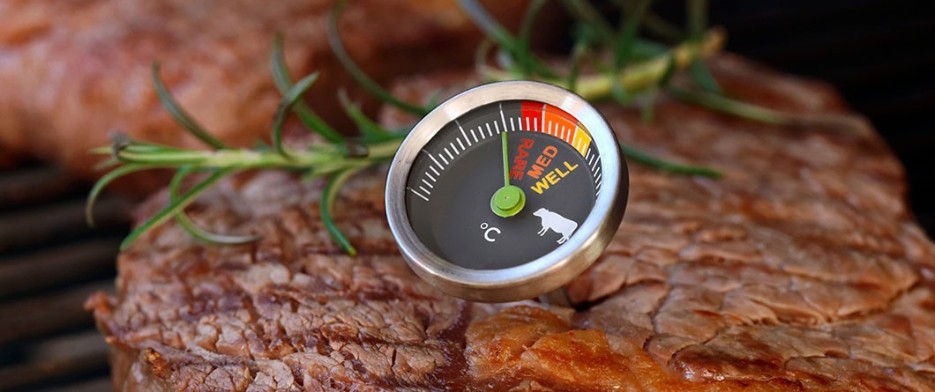How Important Is Ingredient Temperature When Cooking?
Ingredient temperature is often overlooked in the kitchen, but it can make the difference between a successful dish and a failed one. Whether we’re talking about the tenderness of a steak or the texture of a dough, the proper temperature influences flavor, appearance, and even food safety. When it comes to meat, things become even more delicate.
Every cooking enthusiast should have a meat temperature chart on hand—a tool essential for achieving tender, juicy, and perfectly cooked dishes.
Why Ingredient Temperature Matters
Ingredient temperature is a key factor in the chemistry of cooking, affecting how foods react, cook, and develop aroma. Using cold ingredients straight from the fridge can slow down the cooking process or even alter the final result. For example, cold eggs can prevent dough from rising properly, mayonnaise may break, and overly soft butter can ruin the texture of baked goods.
With meat, temperature is even more critical. A piece of meat that’s too cold placed directly in the pan will cook unevenly: the exterior may burn while the interior remains raw. That’s why it’s recommended to bring meat to room temperature before cooking for more consistent results. But even this isn’t foolproof without a reliable reference.
That’s where a meat temperature chart comes in, showing exactly what internal temperature each type of meat needs to reach for safe, juicy, and properly cooked results.
How to Use a Meat Temperature Chart Correctly
Using a meat temperature chart may seem technical at first, but it’s actually a simple and effective way to achieve perfect results every time. The chart provides precise internal temperature targets for each type of meat, depending on the desired doneness and food safety standards.
For example, chicken must reach at least 74 °C internally to be safe to eat, while beef can be served at different levels: 50 °C for rare, 57 °C for medium-rare, and 70 °C for well-done. Pork is most flavorful around 63 °C, followed by a short resting period after cooking.
| Ingredient | Rare | Medium Rare | Medium | Medium Well | Well Done |
|---|---|---|---|---|---|
| Veal | 50 °C | 57 °C | 63 °C | 67 °C | 70 °C |
| Pork | 63 °C | 67 °C | 71 °C | 74 °C | 77 °C |
| Chicken | 74 °C | 77 °C | 80 °C | 82 °C | 88 °C |
| Turkey | 74 °C | 77 °C | 80 °C | 82 °C | 88 °C |
| Fish | 52 °C | 54 °C | 57 °C | 60 °C | 63 °C |
| Lamb | 49 °C | 54 °C | 60 °C | 66 °C | 71 °C |
| Vegetables | 82 °C | 88 °C | 93 °C | 99 °C | 104 °C |
To use these guidelines correctly, you need a reliable kitchen thermometer inserted into the thickest part of the meat, away from the bone. Compare the reading to the chart and adjust cooking time as needed.
This approach removes guesswork and lets you cook with confidence. There’s no need to cut into meat to check doneness or rely on intuition—a clear, precise guide ensures culinary success every time.
Room-Temperature Ingredients – The Golden Rule of Cooking
One of the simplest yet most important tricks in the kitchen is to bring ingredients to room temperature before use. This practice promotes even cooking, better mixing, and more precise control over final results. Eggs, milk, butter, and especially meat behave differently when they’re no longer cold.
For meat, removing it from the fridge at least 30 minutes before cooking prevents thermal shock and helps achieve a beautiful, even sear. Even when following a temperature chart closely, this step should not be skipped. The internal temperatures in the chart are reached more quickly and accurately when the starting temperature of the ingredient is close to room temperature.
Even with a precise temperature chart, if the ingredient starts too cold, the values cannot be applied effectively.
The initial temperature of ingredients directly influences the time needed to reach the correct internal temperature. Therefore, combine chart guidelines with proper ingredient preparation so each recipe turns out safe, flavorful, and perfectly balanced.
In the kitchen, details make all the difference, and ingredient temperature is one of the most important. Respecting the correct temperature enhances taste, texture, and food safety. A meat temperature chart gives you the confidence to cook accurately, consistently, and deliciously every time.


